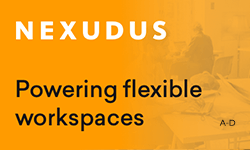This column features insights the curators at ThisWeekInCoworking believe should be archived publicly for all operators everywhere. The following post was written by Christoph Fahle from OneCoworking:
I recently spoke to ten asset managers about improving occupancy in badly performing office buildings with flex space. Here are six things they all got wrong about Flex Space & Coworking.
1️⃣ It's Not Just About Hot Desking:
Adding flex space isn't about slapping down some hot desks on the ground floor. It's about rethinking the whole building - integrating flex and hospitality all the way up to the enterprise suites.
2️⃣ There Is No One-Size-Fits-All:
Flex space demands customization. Each building's unique blend of location, market, and competition dictates its ideal flex solution - from the space and pricing to the hospitality and marketing strategy and beyond.
3️⃣ It Is Not a Quick Fix:
Adopting flex space is an investment in the future, requiring not just initial fit-out but also ongoing optimization, training for staff, adjustments. It's about building value over time, not instant solutions.
4️⃣ It's More Affordable than Anticipated:
Entering the flex space market can be cost-effective. On-demand solutions for everything from furniture to technology keep initial capital expenditures low and allow operations to scale in tandem with demand.
5️⃣ It Improves Consistent Cash Flow:
Flex space helps stabilize cash flow. By attracting a diverse range of tenants with varying lease lengths, buildings can actually ensure a more reliable and continuous revenue stream.
6️⃣ Misjudging the Environmental Impact:
Many overlook the fact that shared space dramatically reduces the carbon footprint. Less commuting, higher space utilization, and less vacant space. Flex space usage will soon become a crucial ESG factor.
This shouldn't come across as overly negative. I'm genuinely impressed with the openness and interest that the traditional real estate industry has shown recently in flex space and coworking.
I truly believe we're approaching a pivotal point where it will be impossible to imagine an office building without flex space. My guess is that asset owners will take a much more active role in this, either by creating their own flex brands or by partnering with service providers to incorporate flex options.
What's your vision of the future of flex in this regard? Let’s discuss here.
This piece of insights was archived in Week 13 of 2024's newsletter.







